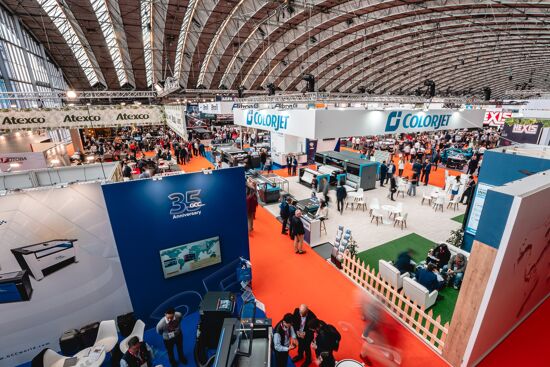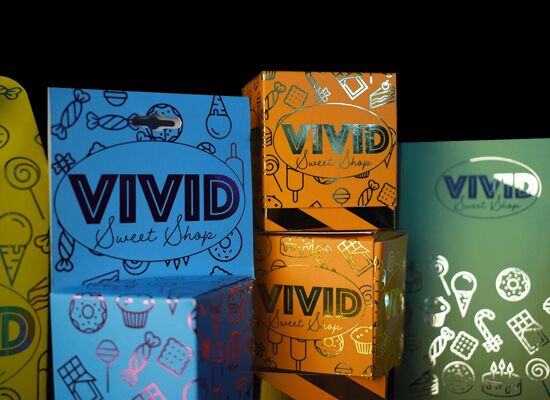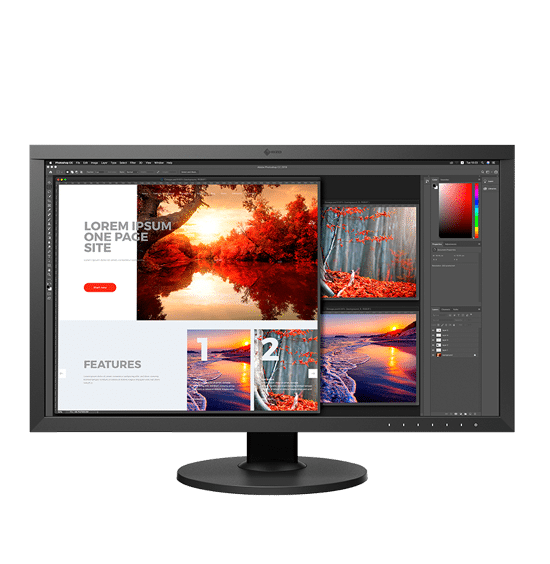The latest innovations in screen printing technologies
.png?width=750)
Marshall Atkinson shares the latest innovations in screen printing tech and the future of screen printing including artificial intelligence, screen imaging, hybrid systems, eco-plastisol ink and 3D digital ink technology.
Techniques and technologies advance in every industry, including screen printing. Businesses are constantly looking for a better way to do something.
In this article, we’ll delve into the transformative ideas shaping the landscape and significantly impacting the future of screen printing.
Artificial Intelligence
You can’t escape it. And if we are going to discuss cutting-edge ideas, we need to begin with AI. Sure, you are probably using ChatGPT to help write sales scripts, create a weekly marketing calendar, or send a follow-up email to someone.
But AI has other uses.
Data Analytics - One of our industry's biggest problems is comprehending what is happening in the business daily. This could be in production, sales, or how a business leads employees. Because shop leaders are usually too focused on the day-to-day challenges, making sense of data doesn’t happen because nobody has hours (or days) to review data trends to make a solid decision. Usually, the data becomes old, and opportunities are forfeited.
Using AI to perform rapid analysis, segmentation, and graphing can clarify your company's KPIs. What sells the best? Who are our best customers? What type of order flows through the shop the easiest?
Getting a handle on data in real-time makes it easier to develop a better customer experience, solve workflow problems, and increase profitability.
Customer Service - The notion of “customer service” has evolved over the years. In some businesses, customer service is simply answering the phone when it rings and answering questions.
But we both know it is more than that. Your customer service team is swamped daily with emails, phone calls, customer follow-ups, webpage live-chats, and an endless list of problem-solving tasks that constantly land in their lap.
Smarter businesses are using AI technology to help customers quickly. Here is a list of a few ways that AI can augment the customer service experience with your business:
-
Automating order entry, outbound responses, and other tasks via API links using Zapier.
-
Customer inbound inquiries and questions on social media or a webpage can be fielded using tools such as Zendesk.
-
Zendesk can also be used to populate a basic knowledge base and FAQs with facts and content to reduce inbound customer inquiries.
-
Graphing information for visualization with tools such as Grid, or Tableau.
-
Create automated customer engagement and marketing campaigns using AI with a platform like Klaviyo.
Of course, the benefit of using these AI tools is the time and effort savings. You can free up your team to get involved in more complex customer challenges. Overall, this greatly improves customer satisfaction and engagement and reduces support costs.
Art Creation - Many businesses in the industry are turning to AI tools such as Midjourney, DALL-E 3, Adobe, and Ideogram to help augment an overworked art department. In some circles, using AI for art is akin to making a pact with the devil, but it is seen as a blessing for many creative teams.
These tools work on the diffusion model based on LLM (Large Language Model) datasets. Hundreds of millions of images and image-to-text pairs are used to train the algorithm for these AI tools. The AI tools learn how to match a word prompt to an art idea.
Random noise is converted to an image using the trained algorithm. Because each image starts with a random noise template, no two images will be identical, even if the same prompt sequence is deployed. Each word in the prompt sequence is analyzed and converted to a math algorithm. The longer the prompt sequence with the number of words, the more complicated the math for the prompt to produce the image.
Creative teams are using these AI tools to reduce the time it takes to create art assets for projects. What used to take hours now only takes minutes. The challenge is that the outcome of the AI tools is based on the prompts. Suddenly, a person’s vocabulary and ability to turn a creative idea into a word phrase is directly proportional to the ease of creating an image.
Screen Imaging
Transferring the art to a coated screen and getting perfect results has never been easier. This is due to new developments in screen-making technology using lasers.
All LTS (Laser to Screen) systems image and expose the screen in a one-step process. Some models can handle two screens simultaneously, which increases throughput.
To reduce unintended variables, shops will need an auto-coater to apply emulsion to the screen rather than doing it by hand. This ensures the consistent and proper emulsion EOM. The emulsion used is typically a dual-cure water-resistant pure photopolymer.
Screens are locked in with a three-point registration system for easy registration and set-up on press later. These systems are connected to the shop’s server, and files are loaded and ripped in a print queue. The screen (or screens) are imaged and exposed in one step. After imaging, the screens are ready for washout. Shops with an LTS usually use an automated high-pressure water washout system, as there isn’t any toner or wax on the screen to signify the areas to be washed out. A worker can still do this by hand, but small details can get missed. An automated system prevents challenges with parts of the image not being washed out properly.
Models to review are:
Direct to Film (DTF) Printing
If you have been to a trade show recently, you know you can’t escape the constant presence of DTF. It is seemingly everywhere.
Why now? What is behind this sudden demand to use transfers?
These aren’t your father’s transfers. Innovations in materials, print heads, and the consumables used to print DTF transfers have impacted the surge in usage. It wasn’t too long ago that print shops had regular orders for large quantities of shirts that would ship to a distribution center for orders.
Now, with the emergence of Print On Demand (POD), orders are coming from online platforms and being produced individually. The print shop is suddenly the printer and the distribution center all rolled into one.
DTF transfers are used for everything from customer neck labels to shirt designs. Due to increased demand, reliable industrial-strength DTF printers are in huge demand. Want to know what’s behind this surge in popularity? Simply follow the money.
Millions of t-shirt orders are sold daily on platforms built on Shopify, CustomInk, Printful, Printify, Etsy, or custom industry platforms such as DecoNetwork, Gooten, or MerchLoop.
Regardless of platform, these powerhouses use DTF technology to easily and consistently send print-on-demand orders within a short window.
Ironically, screen printers everywhere lament that a DTF transfer isn’t the same as a screen-printed t-shirt and turn their noses up at the decoration method. Meanwhile, millions of shirts are being decorated and sold, with extremely healthy profit margins.
If your shop handles small runs or print on demand, you owe it to yourself to seriously consider incorporating DTF technology into your operation.
There is currently an arms race in the DTF printer market. Have you attended a trade show lately? Then you know what I mean.
Based on what I see in the market from shops running DTF orders in-house, here are the leading print systems for DTF:
Screen & Digital Print Hybrid Systems
Have you ever considered how incredible it would be to combine the print clarity of digital with the high speed and low cost of traditional screen printing?
That’s the power behind a hybrid system printer.
Imagine this scenario. You want to print a series of shirts that all look “the same,” but there are personalization options for each shirt. A logo, someone’s name, a photo, etc. You can run thousands of shirts in a print edition with the same white high-solids acrylic white underbase, but each shirt is printed with direct-to-garment CMYK print heads that allow for high-speed customization.
Variable data printing has power. That power is making a fan of a sports team or band extremely happy or printing the face of a recent graduate on a “Class of” shirt.
The two top hybrid print systems are:
Eco-Plastisol Ink
One new innovation launched in 2024 was the Revive Ink line by Wilflex. This is true plastisol ink that is made from 50% bio-derived content. This new ink line allows printers to comfortably use plastisol ink and hit their sustainability goals without compromising performance.
Wilflex Revive inks are compatible with Wilflex™ Epic™ PC Express Color Mixing System and can be mixed to thousands of Pantone® shades using IMS 3.0, Avient Specialty Inks' proprietary color formulation software.
3D Digital Ink Technology
Kornit has launched a new ink system that allows it to print dimensionally with digital print applications. The Kornit XDi system prints ink with a raised surface hand-feel, which can be incorporated into specialty effects with digital printing.
Imagine being able to print simulated embroidery, high-density, vinyl, 3D designs, or dimensional accents or effects into prints on garments!
To discover the latest content that covers a wide range of sectors including screen printing, AI and inks sign up for FESPA’s free monthly newsletter FESPA World available in English, Spanish and German.
Interested in joining our community?
Enquire today about joining your local FESPA Association or FESPA Direct
Recent news

European Sign Expo to highlight developments shaping the future of signage and visual communications
European Sign Expo 2025 (6 – 9 May, Messe Berlin, Germany) is weeks away and a host of leading exhibitors are all set to welcome Visionaries from across the signage and visual communications industries to their stands.

Adding sparkle to personalised print with special effects
With demand for personalisation on the rise, Rob Fletcher looks at how offering customers the option to add special effects to their printed work can help you win new business and expand into new markets.

Kernow Coatings to showcase innovative solutions at FESPA 2025
Kernow Coatings will showcase innovative, sustainable wide-format printing solutions at FESPA 2025. Highlights include a collaboration with Ricoh for a space-themed booth, featuring KernowJet MetaliK and Interiors Structured Silver. They'll also present recyclable wallcoverings and PVC-free media, emphasizing high-performance, eco-friendly options.

Understanding the differences and similarities between monitor and RBG Device ICC Profiles
Paul Sherfield explores the the intricacies of RGB monitor profiles and RGB device profiles, uncovering the challenges and considerations that we can face in the colour management field face daily.